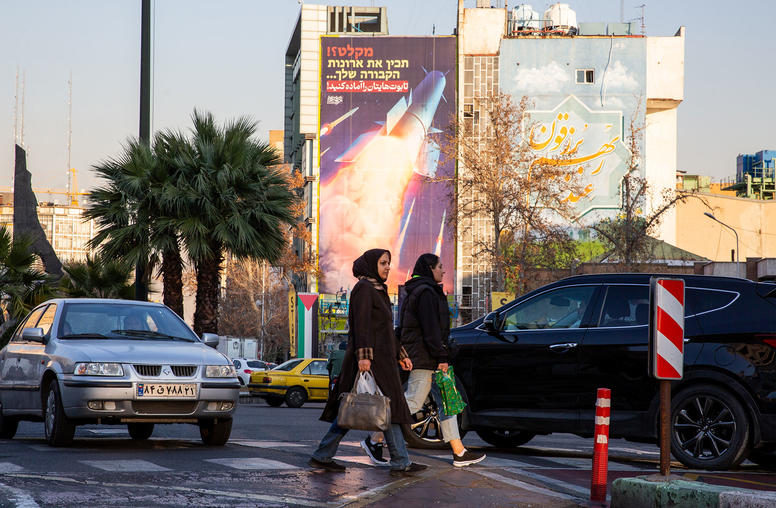Negotiating with Iran
Wrestling the Ghosts of History
John Limbert steps up with a pragmatic yet positive assessment of how to engage Iran. Through four detailed case studies of past successes and failures, he draws lessons for today’s negotiators and outlines 14 principles to guide the American who finds himself in a negotiation—commercial, political, or other—with an Iranian counterpart.
Foreword by Mark Bowden.
- Watch John W. Limbert discusses his newly published book
- Negotiating with Iran: Press Release
- The Lessons: Fourteen Steps to Success
- Negotiating with Iran: Questions and Answers
- Praise for "Negotiating with Iran"
- Events
"A must-read for anyone who hopes for (or fears) an American reengagement with Iran. Superb diplomatic history focused on lessons learned rather than festering grievances. I hope Iranians read this as well as Americans. Limbert is one of our few genuine Iran experts."
—Richard W. Bulliet, Columbia University
"Written by an author intimately familiar with the Persian language, history, and customs, this unique work addresses and sets aside many false but widespread preconceptions about Iran, Iranians, and Iranian culture. A useful addition to the literature on Iranian negotiating technique, style, and expectations, and a stand-alone book on the subject, this study is very timely. Iran has emerged as a regional power; on many crucial issues the United States and Iran are at a loggerhead; and the new American administration intends to launch on direct engagement with Iran. For Americans, understanding Iranian negotiating behavior is clearly critical at this juncture."
—Haleh Esfandiari, Woodrow Wilson International Center for Scholars
As the United States weighs a change of approach toward the Iranian government after thirty years of confrontation, John Limbert steps up with a pragmatic yet positive assessment of how to engage Iran. Through four detailed case studies of past successes and failures, he draws lessons for today’s negotiators, and he challenges both Americans and Iranians to end decades of mutually hostile mythmaking. While he acknowledges that any progress at best will be measured in baby steps, Limbert provides clear reasons for renewing dialogue and outlines 14 principles to guide the American who finds himself in a negotiation—commercial, political, or other—with an Iranian counterpart.
John Limbert writes from a personal and professional perspective, combining a deep appreciation and knowledge of Iranian culture and history, first-hand diplomatic experience, and an understanding of what it means to negotiate for the lives of Americans. Anyone interested in understanding U.S.-Iranian history and relations will find this volume invaluable.
John W. Limbert was appointed Distinguished Professor of International Affairs at the U.S. Naval Academy in August 2006 after a 33-year career in the United States Foreign Service. He was president of the American Foreign Service Association (2003-05) and ambassador to Mauritania (2000-03). Ambassador Limbert holds the Department of State’s highest award—the Distinguished Service Award—and the Award for Valor, which he received in 1981 after fourteen months as a hostage in Iran. He has a PhD from Harvard University in history and Middle Eastern studies and has taught in Iranian high schools and at the University of Shiraz. He has written numerous articles on Middle Eastern subjects and has authored Iran: At War with History and Shiraz in the Age of Hafez.



